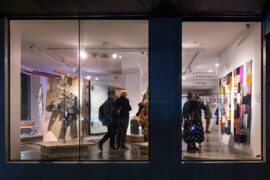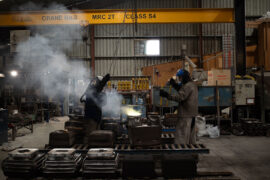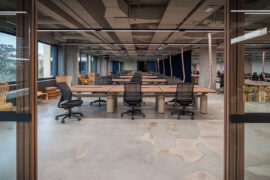Experts have called on the architecture community to remember to look to the past when designing for the future during last week’s INDE.Summit.

August 18th, 2021
Indesign was joined by four architecture experts from around the region to discuss manifesting culture, place and identity in the Indo-Pacific.
The panellists were Akshat Bhatt, principal architect with Architecture Discipline in India, Goy Zhenru, director of Goy Architects in Singapore, Michael Mossman, PhD researcher and lecturer at The University of Sydney School of Architecture Design & Planning and Richard Francis-Jones, design director at fjmtstudio.
The panellists discussed how spaces shape identity and different communities may form different relationships with architecture over time.
“Spaces really shape our activities and our rituals,” says Goy. “They shape our memories and in turn they shape our identity. I think we really need this identity to reflect on our past to have a foothold in our present so that we can plan for the future”.
In 2020, Goy Architects was winner of the INDE.Awards Best of the Best for the Sukasantai Farmstay project. Her team uniquely works across Singapore, Indonesia and Thailand. It’s this incorporation of different cultures that brings varied mindsets to Goy designs.
“I think that by working together we shape this new regional identity,” says Goy.
Michael Mossman discussed how different people create connections to space over time. Because Sydney’s heritage buildings were built using materials extracted from Country, says Mossman, “There’s a history there that carries through to the moment those places are built and you never know the connection that Aboriginal people may have connected and formed with these Heritage buildings”.
Mossman points to connection to place as a fundamental principle when designing for culture, place and identity. Sydney Park, he says, is one example of a project that has achieved this. The park, which is on Gadigal land, was once a brickworks, then a rubbish tip, and has now been redeveloped into a public space with art installations and native plants, encouraging the return of endemic species.
The way the design has been implemented says Michael, shows “there’s this grander vision that somehow you know someone has really thought through”.
The panellists also discussed the importance of listening to First Nations’ peoples in order to form stronger connections to place, while being careful not to reduce culture to a commodity.
“When we have this desire to connect more deeply to a place, to a culture that we may only be on the periphery of, then there’s a risk once this becomes not so much valued but a priceable entity …there’s a real risk that we’re actually going to do the opposite of what we seek to do,” says Francis-Jones.
In order to avoid this commodification of culture, he added, “we need a little bit of hesitancy, we need a little bit of care and time, and above all, respect”.
“It’s about recognising, acknowledging and celebrating Country and traditional knowledge holders. So there’s a really fundamental starting point that we can, as architects, advocate,” says Mossman.
“I think the real success of a project is contribution to place and embracing the social context and the people around it. And most importantly, a process that actually relates to the work, not a process that’s esoteric,” added Bhatt.
“Architecture is not really about the last perfect building or the new clever idea. It’s about offering a platform that can create new history and possibly new memories for its inhabitants,” Bhatt concluded.
The full panel discussion on Manifesting Culture, Place & Identity In The Indo-pacific, is now available to stream on demand, along with the rest of the insight-rich panel discussions from the inaugural INDE.Summit programme.
INDESIGN is on instagram
Follow @indesignlive
A searchable and comprehensive guide for specifying leading products and their suppliers
Keep up to date with the latest and greatest from our industry BFF's!

A longstanding partnership turns a historic city into a hub for emerging talent

How can design empower the individual in a workplace transforming from a place to an activity? Here, Design Director Joel Sampson reveals how prioritising human needs – including agency, privacy, pause and connection – and leveraging responsive spatial solutions like the Herman Miller Bay Work Pod is key to crafting engaging and radically inclusive hybrid environments.

It’s widely accepted that nature – the original, most accomplished design blueprint – cannot be improved upon. But the exclusive Crypton Leather range proves that it can undoubtedly be enhanced, augmented and extended, signalling a new era of limitless organic materiality.

Buchan’s Andre Jones outlines five factors that will positively impact on the design evolution of Perth. From policy to population, biophilic measures and sense of place. Read Andre’s insights here.

Parramatta’s design-led urban renewal has reached another milestone with the completion of the $320 million commercial building, 32 Smith Street.
The internet never sleeps! Here's the stuff you might have missed

THISS Studio has completed the interior fit out of a flexible office and creative space in east London for independent communications studio, SALT.

The Australian Design Centre (ADC) is facing a crisis as core funding cuts leave NSW without a government-funded organisation dedicated to craft and design practice.

For Tilt, creating and realising a concept that resonates with people and place makes for exemplary design.

The client’s brief was clear: create an environment that honoured FIN’s heritage while embracing its future. For Intermain, that meant rejecting the idea of the corporate, “boring” office and instead leaning into a space that would inspire, connect, and surprise.